Elephants are the largest of the herbivorous mammals on land. They are large mammals with their snout evolved into a trunk and tusks evolved from teeth. Check out these interesting facts about elephants & discover more elephants facts.
Elephants are rather magnificent creatures with unique features such as trunks as long noses, large floppy ears, and wide thick legs. Elephants have had a very vital role in the history of the world’s culture and traditions. A number of dynasties and royal families that have established and ruled various countries have had elephants to symbolize their fraternity. Let’s explore more facts about elephants.
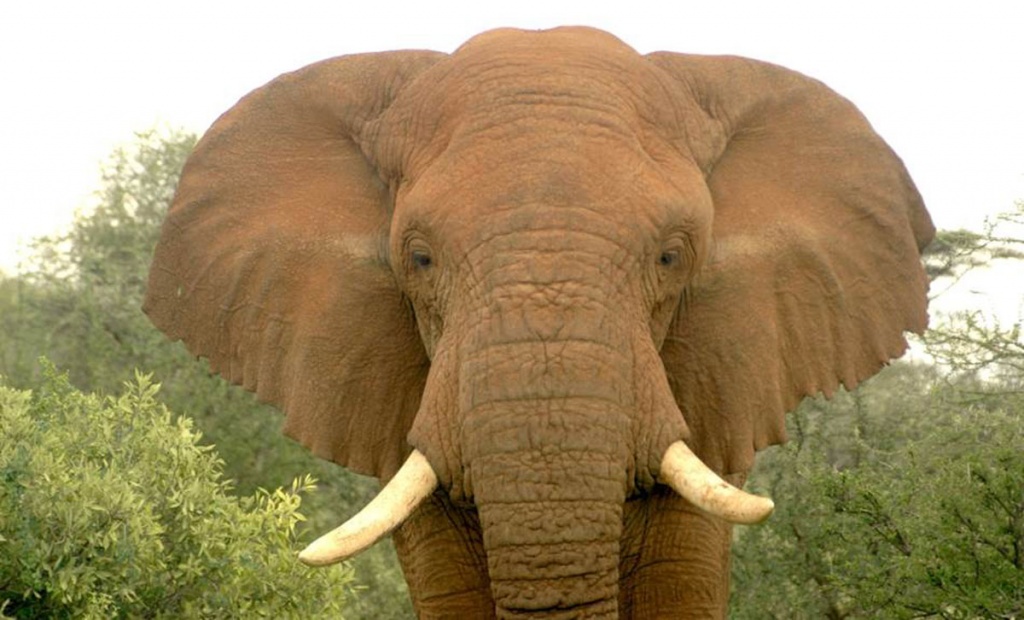
Table of Contents
General Facts about Elephants
1. The average span of life of an elephant is 50-70 years. Yet, the oldest elephant in the world is an Asian Elephant named Lin Wang that lived from 1917-1986, for a span of 86. To celebrate the legacy of the planet’s most beloved animal, August 12 is celebrated as World Elephant Day.
2. The trunk of an elephant is made of over 100000 muscles and weighs around 400.The tip of the trunk has a finger-like structure that is nimble enough even to pluck a blade of grass. Yet the trunk is strong enough to rip off the tree branches. The trunk is the most important part for an elephant as it is used to drink water. The trunk sucks water up to 14 liters at one sip and then blows it directly into the mouth. The trunk is also used when bathing where the elephant sucks water and sprays it on the body, followed by a spray of dirt and mud that acts as a sunscreen after drying up.
3. Like humans, Elephants have the domination of the right hand and the left hand, only with their tusks. Some elephants are “lefties,” while others are “righties”, for fighting, picking up,in stripping bark and leaves off trees.
4. The brains of the Elephants are the largest and highly developed in the animal kingdom. When compared to humans the elephant brain is 3 or 4 times bigger.
5. The baby elephants are blind at birth but tend to stand up just 2 hours after birth.
6. The pulse rate of the Elephants is extremely slow i.e. around 27 beats per minute.
7. The enormous body of the elephant does not allow it to jump. However, this gigantic mammal as a maximum running speed of 25 miles i.e.40 km per hour. They tend to keep at least one of their foot on the ground even they are at their fastest.
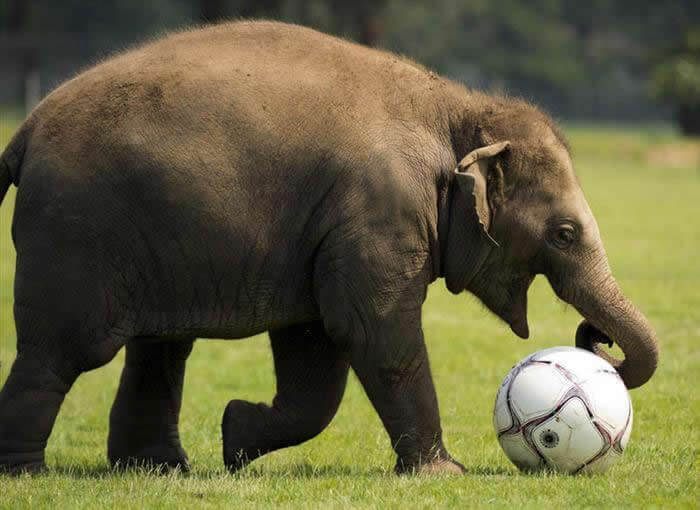
8. The eyes of the elephants have incredible eyelashes that grow up to five inches. The ideal length for the elephant’s eyelashes is one-third of the length of the eye. These eyelashes prevent the drying of the eyes.
9. The digestion capacity of the Elephants is very poor. It is only 50% efficient. This makes them pass a huge amount of methane gas and excrete a manure of 250 pounds a day.
10. The elephants produce a sound as loud as the trumpet blast and as small as a cat’s purr.
11. Elephants are very much emotional and care a lot. When a baby Elephant complains or gets cranky, all the elephants of the family touch and caress the baby to calm it.
12. Elephants are family bound animals. They pay homage to the dead elephants by touching the skulls and tusks gently with their feet and trunks. Also in cases when an Elephant walks by the place where one of its loved ones died, it will stop and move after a silent pause that lasts up to several minutes.
13. The highly developed brains of the elephants have made them highly intelligent animals. They seem to possess a number of complex emotions and feelings such as deep compassion and self-awareness.
14. Elephants often move in tight-knit groups of 8-100 Elephants. They build a deep family bond with their female partners and offspring. The elephant herds are led by the oldest matriarch. When a baby elephant is born it is raised by the entire herd. Male elephants live solo or hang out with other make elephants so they leave the herd at the age of 12 or 15.
15. Elephants are extremely intelligent animals. They have a very sharp memory. This sharp memory is of great help to them during the dry season dry season. In summer, the matriarchs direct their herds for thousands of miles to the watering holes that they have visited in the past.
16. Elephants have the ability to reproduce till the age of 50.
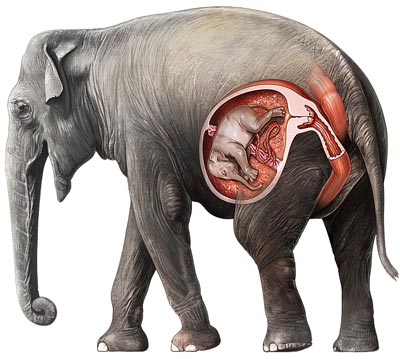
17. Elephants are considered an important part of the ecosystem. They play a major role in the dispersion of seeds. During migration in search of food, elephants often spread seeds everywhere they have eaten. Even after eating, the seeds are released into the air and soil through elephant dung.
18. In spite of having huge feet, elephants walk on their toes. The walking patterns show that the elephants put much pressure on the outer toes of the front feet and almost no pressure on the heels
19. Elephants love to play in the water. They find great fun in it. However, the fun is attached to the health benefit they receive. They experience buoyancy when swimming. This gives a much-needed break to the joints of their legs.
20. Generally, elephants have four molars in total on the side of their mouth. Two molars on the top and two on the bottom.The weight of each of these molars is around five pounds. Throughout their lifetimes, the elephant can grow only 6 sets of molars. As they age they keep losing these molars. On losing the last set the elephant loses the ability to eat and eventually dies.
Elephants are found all over the world. However, the African and Asian elephants are quite popular for its fabulous appearance and tremendous strength. Let’s see the african elephant facts and asian elephant facts.
African Elephant facts
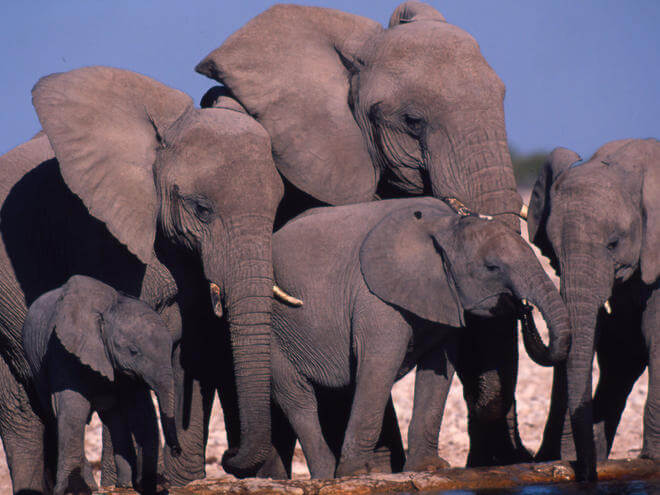
African elephants also known as African savanna elephants and African bush elephants are found in the jungles of the African continent and are supposedly the true kings of the jungle. They are found in the areas of southern Africa and most of the sub-Sahara Africa. Many cultures and communities in Africa worship the African Elephant. They consider it a symbol of power and strength. The African elephant is also admired for its mass, stamina, longevity, cooperative spirit, mental faculties,and loyalty. In South Africa, the elephant tusks are used in the coat of arms. This represents strength, wisdom, eternity, and moderation. These gigantic African elephants have several interesting facts.
1. The primary feature that distinguishes the African elephants from its counterparts in the huge floppy ears.
2. African elephants are the largest of the land mammals alive at present. Male elephants weigh over 13,000 pounds i.e. 6,048 kg and up to thirteen feet i.e. 4 meters tall.
3. Male as well as female elephants possess tusks that measure over two meters i.e. 6.5 feet in length.
4. The eyesight of the African elephants is not so great, however, the sense of hearing and smell is pretty sharp.
5. The African elephants are herbivores. They consume over three hundred pounds of food each day. Most of their time i.e. almost eighteen hours a day is spent looking for food including plants, grass, and bark.
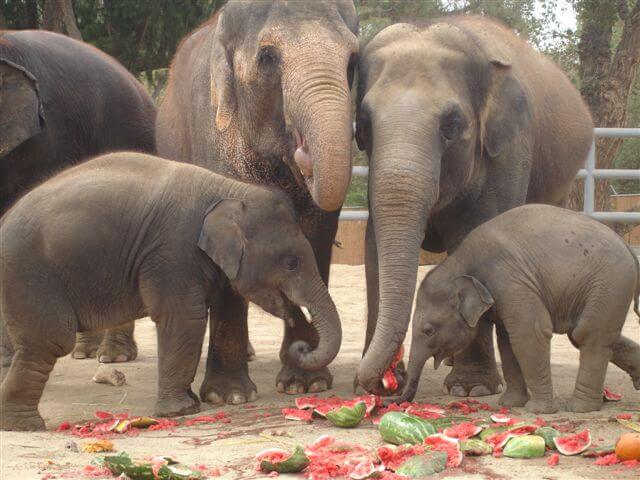
6. The African Elephants consume over two hundred liters, approximately 52.8 gallons of water at one sip.
7. These animals do not have great eyesight but do have a very good sense of smell and hearing.
8. The gestation period of the African elephant is 22 months that is pretty longer than any other terrestrial mammal.
9. The weight of a newborn elephant baby is 260 pounds. The trunk tip of the African elephant has two opposable extensions that act like fingers and help them to pick things to eat.
10. The African Elephants have baby tusks at birth that fall out as they age. These baby tusks are then replaced with adult tusks that are permanent throughout life.
11. The African elephants on an average have an ability to hear calls of other elephants from a distance of 4 kilometers.
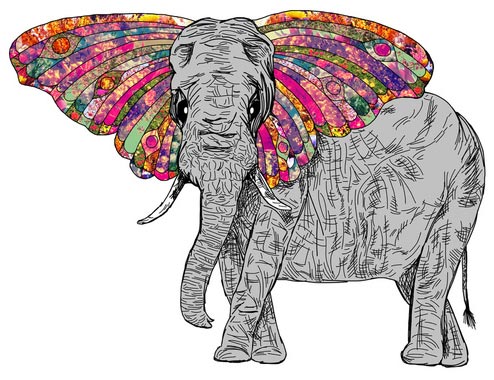
12. The physical appearance and the emotional attributes of the African elephant are contrasting. They care for their wounded counterparts and mourn for the dead ones.
13. The African elephants communicate with their bodies. They greet the other elephants by wrapping each other’s trunks, spinning in circles, flapping their ears, and making trumpet sound.
14. The African Savanna elephant shave curved tusks and the forest elephants have straight downward pointing tusks.
15. The trunk of the African elephant has more than 40,000 muscles and tendons.
16. The ear of a male African elephant weighs around 100 pounds.
17. The lifespan of African elephants is as much as that of human beings.
Asian Elephant Facts
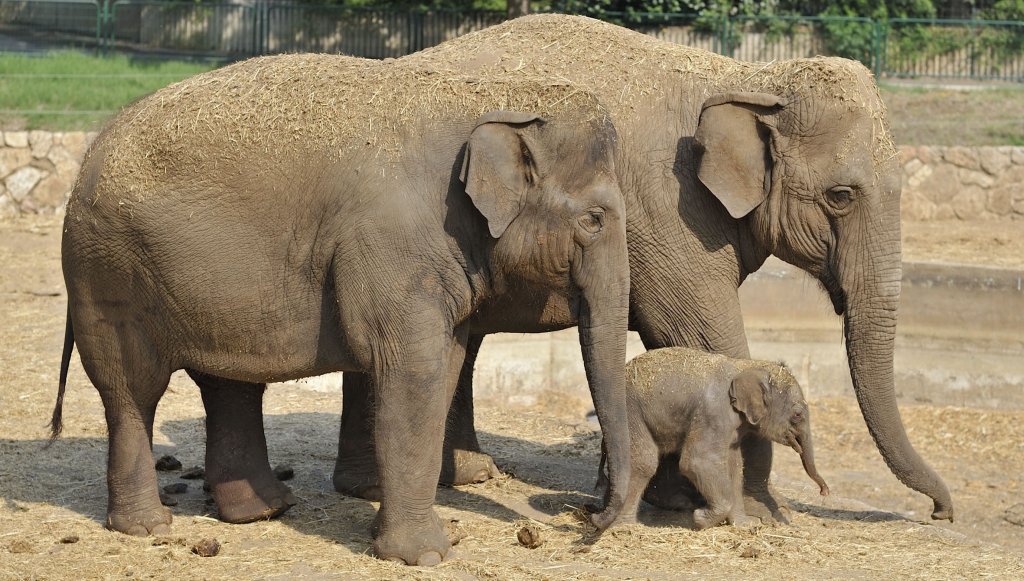
Asian elephants are smaller in size when compared with the African elephants. The ears are not as big and floppy as that of African elephants. The back of Asian elephants is more rounded and makes the crown of their head the highest point of its body.Their natural habitat is grasslands, forests including rainforest, scrub forest, and semi-cultivated forests. They prefer to live in areas where grass with low woody plants and trees are grown.
The Asian elephant natives in India,Bangladesh, Myanmar, Bhutan, Sri Lanka, Nepal, Vietnam,Thailand, China, Cambodia, Malaysia, Laos People’s Democratic Republic, and Indonesia. Elephants are worshipped at a status equivalent to God in some Asian countries. The Asian elephants are closer to human.
1. Asian elephants have a single finger like-structure by the end of their trunks, unlike the African elephants that have two.
2. The Asian elephant beats its trunk vigorously on the ground to alert the herd members of the danger or any sort of threat.
3. The Asian elephants are very intelligent mammals. They use their trunk to determine the hardness of the land where the elephant taps on the land to check if it is hard enough to walk on. Once the rigidity of the land is confirmed, it slowly moves its front foot and places its rear foot right on the footprint of the front foot.
4. The male Asian elephants have long and sturdy tusks whereas the female elephants have short ‘tushes’, sticking out of the upper lip.
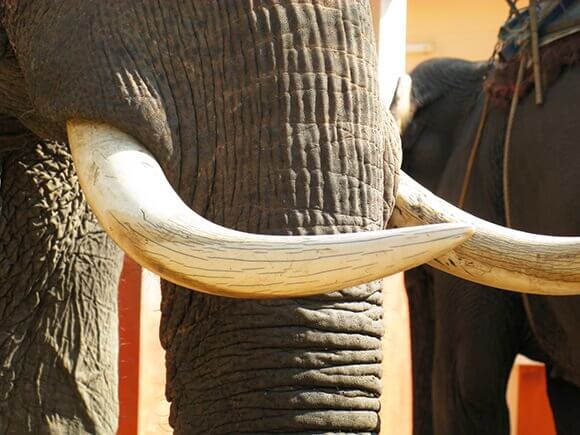
5. Asian elephants live in small groups of 6-7 related female elephants.
6. When giving birth the females join other herds where the delivering elephant is surrounded by other female elephants.
7. Asian male elephants at the age of 20 become ‘Musth’. The testosterone levels in their blood increase 20 times giving them a feeling of extreme arousal for about 3 weeks. In these 3, weeks the male becomes very aggressive and wanders in search of females. They may also put a show of fighting other males to increase their attractiveness for the females.
8. Asian elephants consume food up to 150 kg and due to their inefficient digestive system; they excrete around 18 times a day.
9. The skin of Asian elephants is thick and wrinkly covered with thorn-like hairs. The body is very dry and greyish-brown in color.




























